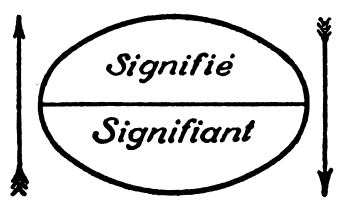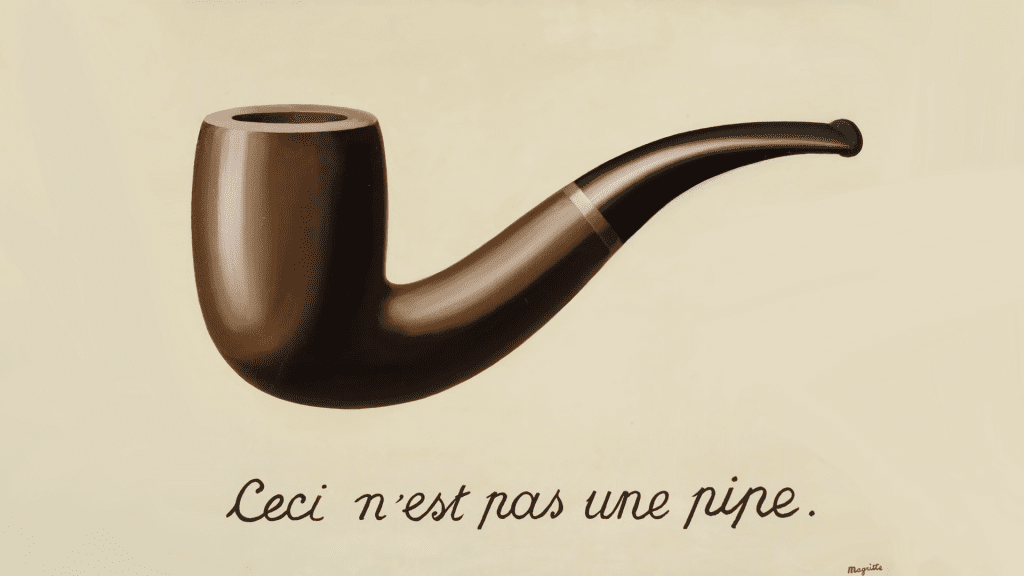If you want to influence how people make decisions, you first need to understand how they make them.
The only way you will be able to build a brand that makes waves is to understand that a need is out there. This is the crux of advertising: creating something that solves a problem. In essence, your USP.
Understanding how people make decisions
I’ve already explored the realms of behavioural marketing and how it can increase brand engagement. The short version is that you shouldn’t assume you’re marketing to a rational mind. Most of what we encounter day-to-day is filtered out by the automatic system in our brains – in other words, we don’t pay attention. The things that you would assume would cause someone to engage their brain often slip through. Basically, our brains will do anything for an easy life, even at the cost of making mistakes.
And the fact is, people don’t buy products – they buy-in to an idea. They purchase things to add to the perception they’ve built of themselves in their brains.
When you buy a new phone, for instance, you are affirming two things:
- The type of person you believe owns a phone like that
- The type of person you think you are
That’s why Apple has such a monopoly on the tech world: its brand is a lifestyle. A feeling. That’s the foundation of its loyal army of fans, not just the fact their tech makes their lives easier.
What is a brand?
According to the American Marketing Association Dictionary, a brand is:
“A name, term, design, symbol, or any other feature that identifies one seller’s good or service as distinct from those of other sellers.”
But, in reality, it’s a whole lot harder to define in a single sentence.
That’s because it’s all just constructed perception. What do you want people to associate your brand with? What colours, symbols and language do you use to reinforce this? You decide all these things when you create it. If you’re good at advertising and marketing, you reinforce your brand message every step of the way.
Because you’re constructing it from nothing, this is both a blessing and a curse. You’re in control of the image your brand evokes in people’s minds, but you have to work hard to get there. It’s a crowded world full of symbols and meaning, so how do you get yours to carry weight? By using semiotics to inform your decisions, you can leave clear messages in your chosen symbols that your audience will decode exactly the way you want them to.
The world of semiotics

Semiotics is the study of signs and symbols. More importantly, it is a study of how we use signs to understand and interpret meaning from the world around us.
This is important when we’re trying to insert a brand into a jam-packed landscape.
Semiotics was introduced by the Swiss linguist Ferdinand de Saussure in the 20th century. His work is helpful in explaining why we attribute certain meanings to certain objects.
Saussure breaks things down into the signifier and the signified.
- Signifier: a sign’s physical form (such as a sound, printed word, or image) as distinct from its meaning.
- Signified: the meaning or idea expressed by a sign, as distinct from the physical form in which it is expressed.
Using an apple as an example, the signifier is the form it takes so would be the apple itself (the look, shape, feel.) The signified would be the associations it represents: the colour red, health, a teacher’s pet, a tech-giant.
The extension of this is what’s important: the reminder to eat better, the lady in the market that sells them, the fear of getting a worm in one.
Symbols are powerful communicators because there’s no limit of what it can represent.
The world around us is bursting with objects, dialogue, life, symbols – everything just waiting to be made sense of. As human beings, we use language to navigate our way through it all. But the way it works is mind-boggling. Why does a certain combination of letters get assigned to a particular object? And why can these change completely and still be recognised by another culture?
Recognising the complexity of symbols in advertising
“The relationship between the signifier and the signified is arbitrary.”
Saussure, Course In General Linguistics
The giant web of symbols filters naturally through the subconscious as they’re the building blocks of the world. The main benefit of utilising hardwired symbols in your marketing arsenal is that you can create shortcuts to communicating with your audience. As highlighted earlier, the conscious mind is a tough nut to crack. Symbols are automatically accepted by the brain. Better yet, they come attached with connotations (that you can steal for your own brand message if you choose them well).
Advertising is all about creating that relationship with an audience who will listen to what you have to say. If you use something they are already familiar with you can create an affinity between your brand and them.
How does the breakdown of signs relate to purchasing decisions? Well, it works twofold. Firstly, the way someone identifies with your brand or your adverts through the signifiers you adopt. And how products themselves become symbols which feed into the symbol they’re turning themselves into.
Why signs aren’t that simple
If signs were simple, everyone would understand semiotics. But they aren’t.
Context plays a big part – if I eat an apple with a sour look on my face, that says the apple doesn’t taste nice. If it’s an apple embossed on the back of a laptop, that’s Apple the company. If it’s graffitied onto a wall, who knows what that could mean, but probably isn’t in reference to your 5 a day.

This famous painting above demonstrates the point well. It’s a painting of a pipe and underneath the words “this is not a pipe.” Well… what is it then? Is it pointing out the fact that it’s just a painting of one? Or is it saying it’s not supposed to be a pipe at all and that the observer should look closer? The meaning is purposely ambiguous. It brings to question what a symbol even is.
As simply a painting, rather than an actual pipe, it is merely a representation.
Why does the word “pipe” associate with that object? The fact the text is in French further heightens this problem. The word “pipe” is the same in both English and french. But for, say, a Spanish audience the word is “tubo”, so there’s that added disconnection.
It’s fascinating to consider how language works. How together, we all understand and accept the word ‘pipe’ to mean what it does.
There’s a lot to learn here.
Firstly, by looking at your marketing materials you can decode the meaning behind each element on the page. Just like the audience is forced to do with this painting. Then, you can alter any aspect that doesn’t marry up with the brand message you want to promote.
Secondly, make sure you’re not doing a ‘pipe’ – showing one thing and saying another. All elements of your campaign should work together.
But this doesn’t mean you should use up valuable space saying the same thing. For example, if the text here read “this is a pipe” there would be no point having it. The image is already showing that. Instead, the text could offer something more than the picture doesn’t portray – information about its owner, for instance.
Continuing with the pipe, what does a pipe represent? What does it signify? Well, it is commonly associated with older gentlemen who have a certain amount of money and certain manner about them. Therefore, if this is your target audience, a pipe could be a sign that serves your brand well. Similarly, if you’re promoting a men’s slippers brand, the well-known connotation between pipe and slippers could work in your favour. Unravelling the pre-determined, universally-accepted symbols puts you a step ahead. It’s about getting the balance right between creating a fresh brand that feels like ‘thinking out the box’ as well as not confusing engraved meanings.
Assumption

“To see someone who does not see is the best way to be intensely aware of what he does not see.”
Roland Barthes, Mythologies
Roland Barthes was another leading theorist on the subject of semiotics and followed a similar approach to Saussure with his form of structuralism.
Barthes argues that when proper context is removed from a sign its meaning is stripped. The result of this is a cosy, yet stifling, environment. Signs which society projects that are stripped of their original meanings take on their own second-order significance.
For example, a revolutionary figure often gets printed on t-shirts decades later. People then buy it to absorb what they believe they stood for into their perception of themselves. Often this is things such as ‘freedom’ and ‘rebellion’. This can actually be a far cry from the reality of the movement. What if the way this rebel figure carved history was through the murder of thousands? Is this now something you want to associate your self-image with?
The message has become mixed with the signs that society has projected onto the figure. Barthes argues that this causes signs to take on a second meaning: the one made up of its assumptions and context within today’s society.
It’s important to pay attention to what surrounds your brand and how that affects your advertising. You’ll have a difficult job if you adopt a sign that has an established meaning already. People will make assumptions and you’ll find yourself on the back foot from the start working to change their preconceptions.
Emotional decisions
So understanding that humans make decisions either automatically or emotionally, combined with the way they interpret the world around them, this helps us to create a valuable picture for consumer research. It goes so much further than understanding one particular type of demographic: it can be applied to everyone. Psychology is a great key to unlocking a seat in your audience’s minds. Semiotics provide tools to unearth how people will react to your brand. If you take the time to understand that different shapes, colours, fonts – everything – attributes various meanings, you can construct a combination that best promotes what you want to say.
If it sounds difficult, and like it’s overcomplicating things, this is the difference between brands that make it and ones that don’t. You shouldn’t look at the world’s biggest brands, see block primary colours and simple shapes and think they were created overnight. It’s like short, snappy text: it didn’t come from a writer’s brain like that, all neatly packaged. It began life as a half-finished, much longer tangled mess that’s been edited and crafted into the punchy tagline you quickly read as you run for the bus.
Change your view
Semiotics leads to innovations that are rooted in lived experiences.
Dr Kishore Budha, University of Leeds
Look at your surroundings whilst holding the view that everything you see is a symbol in your mind. Once you start to unpick how signs and signifiers all work together in a web of meaning, you can identify where your offering sits.
It’s important to remember that people buy products that symbolise what they believe help represent what they symbolise themselves. The world is just one big symbol. If you’re trying to solve a problem for your audience, you’re in essence trying to create a new symbol from scratch for them to identify you by. But trying to do this when every symbol already seems to be taken is tough.
That’s why semiotics is so important for a brand message and advertising as a whole. Only through understanding symbols can you create one that will be decoded in the right way by the right people.



